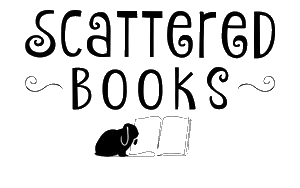

Frankenstein by Mary Shelley: A Comprehensive Review

28 Nov Frankenstein by Mary Shelley: A Comprehensive Review

Read the book
Download the audiobook
Overview and Thesis
“Frankenstein” is not just a tale of horror but a profound exploration of human nature and the boundaries of scientific pursuit. It raises questions about creation, responsibility, and the moral limits of knowledge, making it as relevant today as it was in the 19th century.
Plot Summary of Frankenstein
The novel begins with Captain Robert Walton’s letters to his sister detailing his voyage to the North Pole. Here, he encounters Victor Frankenstein, a scientist obsessed with creating life. Frankenstein recounts his story to Walton, forming the novel’s main narrative.
Victor grew up in Geneva with a deep interest in science. At university, he becomes fascinated with reanimating life and secretly constructs a creature from body parts. Upon bringing it to life, he is horrified by its appearance and abandons it. The creature, intelligent and sensitive, seeks companionship but faces universal rejection and hatred. Its loneliness and suffering turn to vengeance against Victor, leading to a tragic chain of events that includes the deaths of Victor’s loved ones.
The creature demands Victor create a companion for him. Victor initially agrees but then destroys the female creature, fearing the consequences. The creature vows revenge, leading to the deaths of Victor’s bride and best friend. Victor pursues the creature to the Arctic, where he meets Walton and concludes his story. Victor dies, and the creature, remorseful, disappears into the cold wilderness, presumably to die.
Book Themes
- Creation and Responsibility : Victor’s attempt to create life raises questions about the ethical limits of scientific pursuit and the responsibilities that come with creation.
- Isolation and Companionship : The novel explores the pain of loneliness, both in Victor and his creature, highlighting the need for companionship and understanding.
- Revenge and Justice : The cycle of revenge between Victor and the creature underscores the destructive nature of vengeance.
- The Sublime Nature : Shelley vividly describes natural landscapes, reflecting the romantic era’s fascination with the sublime and its power over human emotions.
Character Descriptions
- Victor Frankenstein : A brilliant scientist whose ambition leads him to create life, only to be horrified by the result.
- The Creature : Victor’s creation, intelligent and emotional, but shunned for its appearance. Its desire for companionship and acceptance turns to a vengeful wrath.
- Robert Walton : The captain whose letters frame the narrative, sharing similarities with Victor in ambition and isolation.
- Narrative Structure : Shelley’s use of framed narratives adds depth and perspective to the story.
- Language and Imagery : The novel’s eloquent language and vivid descriptions enhance its themes and emotional impact.
- Pacing : Modern readers may find the pacing slow in parts, with extensive introspection and description.
- Character Development : Some characters, especially female ones, are less developed and serve more as plot devices.
Literary Devices
- Symbolism : The creature symbolizes the consequences of unchecked ambition and the alienation of those who are different.
- Foreshadowing : Shelley uses foreshadowing to build tension and hint at future tragedies.
Audience Suitability
- Ideal for readers interested in classic literature, science fiction, classic horror, and philosophical themes.
Comparisons
- Comparable to works like “Dracula” by Bram Stoker in its gothic elements and to Aldous Huxley’s “Brave New World” in exploring scientific ethics.
Recommendation
- Highly recommended for its timeless themes and contribution to literature.
Potential Test Questions and Answers
- It draws a parallel between Victor’s overreaching ambition and Prometheus, who defied the gods by giving fire to humanity.
- The creature begins as a blank slate, but its experiences of rejection and cruelty shape its actions, suggesting that behavior is influenced by treatment and environment, not inherent nature.
Book Details
- ISBN: 978-0486282114
- Page Count: 280 pages
- Publication Date: 1818
- Publisher: Lackington, Hughes, Harding, Mavor & Jones
- Genre: Gothic novel, Science fiction
- Reading Age: 15 and above
Awards and Accolades for Frankenstein
- Recognized as a pioneering work in science fiction.
- Continues to be studied for its literary
Adaptations
“Frankenstein” has been adapted and released as a movie or series many times over. Most recently, or yet to be released, is the movie, “Lisa Frankenstein,” to be released in 2024. The movie details:
“Lisa Frankenstein” is an upcoming American horror comedy film, slated for release on February 9, 2024. The movie, written by Diablo Cody and marking Zelda Williams’ feature-length directorial debut, offers a unique twist on the classic Frankenstein story. The plot is set in 1989 and revolves around a misunderstood teenage goth girl, Lisa Swallows. In a lightning storm, Lisa accidentally reanimates a handsome corpse from the Victorian era using a broken tanning machine in her garage. This act leads to a playfully horrific transformation, after which Lisa and her resurrected companion embark on a journey in search of true love, happiness, and some missing body parts.
The film stars Kathryn Newton, Cole Sprouse, Liza Soberano, Henry Eikenberry, Joe Chrest, and Carla Gugino. The production of “Lisa Frankenstein” was completed in May 2023, and it is currently in post-production, with editing, music composition, and the addition of sound and visual effects underway.
Given the involvement of acclaimed talents like Diablo Cody and Zelda Williams, along with a promising cast, “Lisa Frankenstein” is anticipated to be a fresh and inventive addition to the Frankenstein adaptations, blending elements of horror and comedy with a modern twist on a timeless story.
More info on Frankenstein film adaptations are available on IMDB.com
About the Author, Mary Shelley
Mary Shelley, born Mary Wollstonecraft Godwin in 1797 in London, was a prominent figure in the Romantic literary movement. She was the daughter of philosopher William Godwin and feminist writer Mary Wollstonecraft, both of whom were well-known intellectuals of their time. This intellectual environment deeply influenced Shelley’s development and worldview.
Early Life and Influences
- Born into a family of intellectuals, Shelley’s education was rich in literature and philosophy.
- Her mother, Mary Wollstonecraft, who died shortly after her birth, was a famous advocate for women’s rights, and her father, William Godwin, was a political philosopher and novelist.
- Shelley received an unconventional education, where she had access to her father’s intellectual circle, which included many prominent thinkers of the time.
Personal Life and Marriage
- Shelley’s life was marked by both passion and tragedy. At the age of sixteen, she eloped with the poet Percy Bysshe Shelley, who was already married. This caused a scandal and estrangement from her father.
- The couple faced numerous hardships, including financial difficulties and the death of two of their children.
- After Percy Shelley’s untimely death in 1822, Mary Shelley focused on her writing and on raising their son, Percy Florence Shelley.
Literary Career
- Mary Shelley wrote “Frankenstein” when she was just eighteen, during a summer stay with Lord Byron and Percy Shelley in Geneva, where a challenge to write a ghost story led to the creation of this iconic work.
- Besides “Frankenstein,” she wrote several other novels, including “The Last Man” (1826), a post-apocalyptic science fiction novel, and “Lodore” (1835), which focused on the experiences of women in society.
- Her works often reflect her belief in the Romantic ideals of emotion and individualism, and they explore themes of social justice, particularly the status of women.
- Shelley’s work, particularly “Frankenstein,” has had a profound impact on literature and popular culture, inspiring countless adaptations and interpretations.
- Her contributions to literature were not fully recognized during her lifetime, but she is now considered a pioneer in the genres of science fiction and horror, as well as an important figure in feminist literary history.
Other Best-Sellers and Awards
- While none of Shelley’s other works achieved the fame of “Frankenstein,” several received critical acclaim.
- “The Last Man” is considered a significant work in the science fiction genre.
- “Mathilda,” though not published during her lifetime, has been recognized for its exploration of taboo subjects.
Mary Shelley’s life and work continue to be a subject of scholarly study and public interest, her narrative art and exploration of themes like creation, responsibility, and societal norms remaining relevant today.
Bookshop.org helps to support independent book sellers. Please purchase ‘Frankenstein’ by Mary Shelley on Bookshop.org. https://bookshop.org/a/1289/9780486282114
Share this:

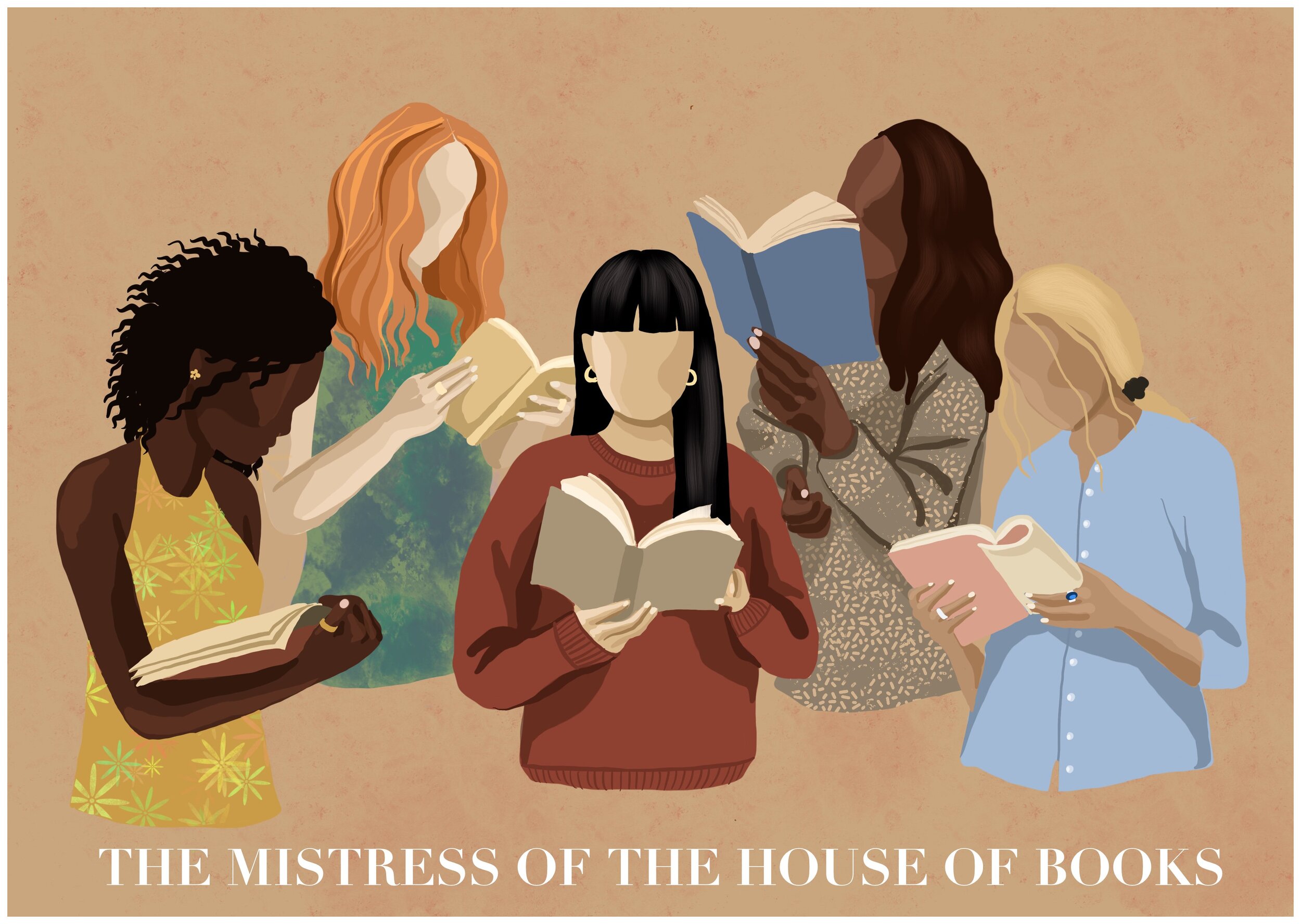
Review: Frankenstein by Mary Shelley
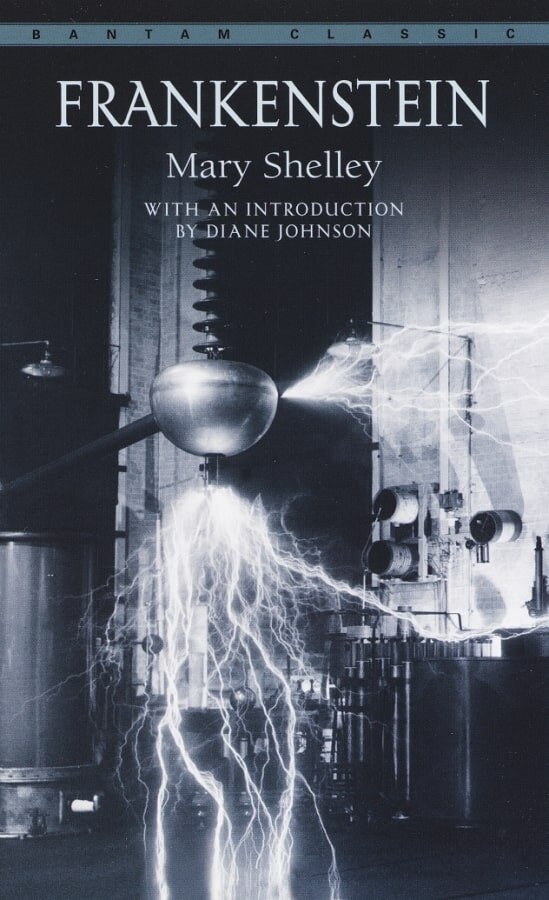
I’m almost embarrassed to admit that the first time I read Frankenstein by Mary Shelley was just last year. I love classics, but there are several that I have only recently read, or haven’t even read at all (yet). I chalk this up to the fact that I didn't really start actually studying literature until 2018 when I started my Master’s degree.
I, like nearly everyone in the world, had obviously heard the story of Frankenstein many times before reading the book. And, as usual, the book completely blew any other version of the tale out of the water. I very quickly fell under the spell of Shelley’s writing and proceeded to become really interested in her.
Before I read Frankenstein , I read another great book called Romantic Outlaws by Charlotte Gordon. It is an excellent resource for learning more about Shelley, and her feminist mother Mary Wollstonecraft. When I discovered that Shelley was Wollstonecraft’s daughter, I was immediately starstruck. If you’re unfamiliar with her, Wollstonecraft wrote one of the earliest feminist manifestos, A Vindication of the Rights of Woman . Inside, she argues that the only reason women are considered inferior to men is that they are not educated in the same way.
Shelley was born Mary Godwin to Wollstonecraft and William Godwin, an English philosopher. From the moment she was born, great pressure was put on her to become an intellectual like her parents. Godwin and Wollstonecraft were celebrities in their circle, and they were both widely admired.
In Romantic Outlaws, I learned a lot more about how Frankenstein came to be, and I decided it was finally time that I read it. It’s a fairly short novel, coming in at just under 300 pages, and I got through it very quickly. If you’re unfamiliar with the story, the book tells the tale of Doctor Victor Frankenstein and his quest to build a human. I won’t get too into the specifics if you haven’t read it yet, but things don’t go as planned for Dr. Frankenstein, and his creature (aptly named The Creature) turns against him.
What I will say is this: Frankenstein has been told and retold since its publication, but one thing that is certain, is that the original novel is not so much about fear or horror or monsters, but what happens when a living thing becomes lonely.
Much of the novel is dedicated to The Creature’s narrative. He is extremely intelligent and well-spoken, thanks to a poor family that he lives among for months without them knowing. He hides in the shadows and listens to their conversations, and he also finds a sack of abandoned books in the woods which he uses to teach himself to read.
The Creature knows that he is ugly, and he knows that he inspires fear in whoever he meets. He is profoundly lonely and decides to go to Victor for help. He pleads with the doctor to create a mate for him, and Victor warily agrees. You’ll have to read the novel to find out what happens next as I don’t want to spoil it for anyone!
After learning more about Shelley’s life, it becomes clear that The Creature’s monologues come from a very personal place. In addition to the pressure put on her to become a famous intellectual, Shelley had to deal with the fact that her mother died giving birth to her. She was constantly trying to make her father proud and was very attached to him. He was very hard on her and was constantly pushing her to be better. This gets tiring after a while.
Then, when she was 16, Shelley would meet her future husband, Percy Shelley, a poet. The pair ran away to be together because Mary’s father didn’t approve of the relationship. Mary Shelley’s relationship with Percy was also one of strain. He was a notorious womanizer, and Shelley was often left alone with her own thoughts. Additionally, Shelley suffered from several miscarriages, and scholars say that it would not be surprising if she suffered from depression. These feelings clearly inspired the deep feelings of loneliness that The Creature expresses.
Shelley was clearly inspired by the epic poem Paradise Lost by John Milton and admitted this freely in the years after Frankenstein’s publication. She uses one line in particular as the epigraph to the novel, which describes the conversation Adam has with God after his creation:
“Did I request thee, Maker, from my clay To mould Me man? Did I solicit thee From darkness to promote me?”
The Creature expresses the same sentiments after he begs Dr. Frankenstein to make him a mate. He even references the epic poem himself but reminds the doctor that when God created Adam, he created Eve, and he did not abandon them. He abhors the doctor for creating him; he never asked to be created. He did not “solicit” him.
In many ways, Shelley is The Creature. She did not ask to be made. She did not ask for the pressures put on her by her parents. She didn’t ask to be born into a world where sadness, loneliness, and rejection rule. She also didn’t ask to be a woman in the 19th century, without many options. At the time, women were supposed to be wives and mothers, and (in her mind) Shelley couldn’t even do that properly.
Shelley works through her feelings of loneliness through her writing. But, she wasn’t allowed to claim her work the first time it was published due to her sex. It was published anonymously with a short introduction by her husband. Many thought that the novel was written by Percy, and he didn’t seem to mind taking credit for it.
The second edition did give credit where credit was due, and Mary Shelley’s name was on the cover. Interestingly enough, when critics found out it was written by a woman, harsh reviews began to surface which criticized the novel, with a few publications refusing altogether to comment on the novel. But despite the harsh reviews, Frankenstein was an instant success and has remained largely read and studied since the 19th century.
For me, it’s important to remember that Mary Shelley was just 18 years old when she wrote her masterpiece. It speaks on the hardships and melancholy that come along with being a teenager on the cusp of adulthood. She was trying to find her place in a world that was very difficult for a young woman. She was trying to express her feelings in a way that felt right. And, I think, if we take a closer look at Frankenstein , we can all recognize that we have a Creature living inside of us.
In an effort to support Bookshop.org , this post contains affiliate links. We may receive a commission for purchases made through these links. Thank you for the support!

Suggestions
- Animal Farm
- Crime and Punishment
- The Catcher in the Rye
- Twelfth Night
- Wuthering Heights
Please wait while we process your payment
Reset Password
Your password reset email should arrive shortly..
If you don't see it, please check your spam folder. Sometimes it can end up there.
Something went wrong
Log in or create account.
- Be between 8-15 characters.
- Contain at least one capital letter.
- Contain at least one number.
- Be different from your email address.
By signing up you agree to our terms and privacy policy .
Don’t have an account? Subscribe now
Create Your Account
Sign up for your FREE 7-day trial
- Ad-free experience
- Note-taking
- Flashcards & Quizzes
- AP® English Test Prep
- Plus much more
This site is protected by reCAPTCHA and the Google Privacy Policy and Terms of Service apply.
Already have an account? Log in
Choose Your Plan
Group Discount
$4.99 /month + tax
$24.99 /year + tax
Save over 50% with a SparkNotes PLUS Annual Plan!
Purchasing SparkNotes PLUS for a group?
Get Annual Plans at a discount when you buy 2 or more!
$24.99 $18.74 / subscription + tax
Subtotal $37.48 + tax
Save 25% on 2-49 accounts
Save 30% on 50-99 accounts
Want 100 or more? Contact us for a customized plan.
Payment Details
Payment Summary
SparkNotes Plus
Change
You'll be billed after your free trial ends.
7-Day Free Trial
Not Applicable
Renews April 30, 2024 April 23, 2024
Discounts (applied to next billing)
SNPLUSROCKS20 | 20% Discount
This is not a valid promo code.
Discount Code (one code per order)
SparkNotes PLUS Annual Plan - Group Discount
SparkNotes Plus subscription is $4.99/month or $24.99/year as selected above. The free trial period is the first 7 days of your subscription. TO CANCEL YOUR SUBSCRIPTION AND AVOID BEING CHARGED, YOU MUST CANCEL BEFORE THE END OF THE FREE TRIAL PERIOD. You may cancel your subscription on your Subscription and Billing page or contact Customer Support at [email protected] . Your subscription will continue automatically once the free trial period is over. Free trial is available to new customers only.
For the next 7 days, you'll have access to awesome PLUS stuff like AP English test prep, No Fear Shakespeare translations and audio, a note-taking tool, personalized dashboard, & much more!
You’ve successfully purchased a group discount. Your group members can use the joining link below to redeem their group membership. You'll also receive an email with the link.
Members will be prompted to log in or create an account to redeem their group membership.
Thanks for creating a SparkNotes account! Continue to start your free trial.
We're sorry, we could not create your account. SparkNotes PLUS is not available in your country. See what countries we’re in.
There was an error creating your account. Please check your payment details and try again.
Your PLUS subscription has expired
- We’d love to have you back! Renew your subscription to regain access to all of our exclusive, ad-free study tools.
- Renew your subscription to regain access to all of our exclusive, ad-free study tools.
- Go ad-free AND get instant access to grade-boosting study tools!
- Start the school year strong with SparkNotes PLUS!
- Start the school year strong with PLUS!
Frankenstein
Mary shelley.
- Study Guide
- Mastery Quizzes
- Infographic
Study Tools
Frankenstein by Mary Shelley was first published in 1818 and stands as a seminal work in the Gothic and science fiction genres . The novel follows the ambitious scientist Victor Frankenstein, who, driven by a desire to overcome death and unlock the secrets of life, creates a human-like creature from reanimated body parts. The story unfolds through a series of letters and narratives, recounting Victor’s journey and the consequences of his creation. Set against the backdrop of Europe in the late 18th century, the novel explores themes of scientific ethics, the nature of monstrosity, and the consequences of playing god.
The icy landscapes of the Swiss Alps, the gloomy atmosphere of Ingolstadt, and the desolate expanses where the creature roams contribute to the novel’s evocative setting. Frankenstein is often considered a reflection of the cultural and scientific anxieties of the time, with the Industrial Revolution and advancements in science raising questions about the ethical boundaries of scientific exploration. The novel remains relevant today, prompting discussions on the consequences of unchecked ambition and societal rejection of the “other.”
Significant adaptations of Frankenstein include numerous film versions, with the iconic 1931 adaptation directed by James Whale featuring Boris Karloff as the monster, and various modern reinterpretations in literature, film, and other media that continue to explore Shelley’s themes in new contexts.
Read the full plot summary , an in-depth analysis of the Monster , and explanations of important quotes from Frankenstein .
Upgrade to PLUS and get instant access to all the study tools
Start your FREE trial
Renew your subscription
Explore PLUS features
Frankenstein SparkNotes Literature Guide
Frankenstein (penguin classics).
- View all Available Study Guides
Take a Study Break

Every Literary Reference Found in Taylor Swift's Lyrics

The 7 Most Messed-Up Short Stories We All Had to Read in School

QUIZ: Which Greek God Are You?

Answer These 7 Questions and We'll Tell You How You'll Do on Your AP Exams

Frankenstein: The 1818 Text
Mary wollstonecraft shelley , charlotte gordon ( introduction ).
260 pages, Paperback
First published January 1, 1818
About the author

Mary Wollstonecraft Shelley
Ratings & reviews.
What do you think? Rate this book Write a Review
Friends & Following
Community reviews.

No one can conceive the variety of feelings which bore me onwards, like a hurricane, in the first enthusiasm of success. Life and death appeared to me ideal bounds, which I should first break through, and pour a torrent of light into our dark world. A new species would bless me as its creator and source; many happy and excellent natures would owe their being to me. No father could claim the gratitude of his child so completely as I should deserve theirs. Pursuing these reflections, I thought that if I could bestow animation upon lifeless matter, I might in process of time (although I now found it impossible) renew life where death had apparently devoted the body to corruption.

“I have love in me the likes of which you can scarcely imagine and rage the likes of which you would not believe. If I cannot satisfy the one, I will indulge the other.” -From the 1994 movie
“...once I falsely hoped to meet the beings who, pardoning my outward form, would love me for the excellent qualities which I was capable of unfolding.”

‘ I was dependent on none and related to none. The path of my departure was free, and there was none to lament my annihilation. My person was hideous and my stature gigantic. What did this mean? Who was I? What was I? Whence did I come? What was my destination? These questions continually recurred, but I was unable to solve them. ’
‘ I am thy creature: I ought to be thy Adam; but I am rather the fallen angel, whom thou drivest from joy for no misdeed. Everywhere I see bliss, from which I alone am irrevocably excluded. I was benevolent and good; misery made me a fiend. Make me happy, and I shall again be virtuous. ’

I collected bones from charnel-houses; and disturbed, with profane fingers, the tremendous secrets of the human frame. In a solitary chamber, or rather cell, at the top of the house, and separated from all the other apartments by a gallery and staircase, I kept my workshop of filthy creation: my eye-balls were starting from their sockets in attending to the details of my employment. The dissecting room and the slaughterhouse furnished many of my materials; and often did my human nature turn with loathing from my occupation, whilst, still urged on by an eagerness which perpetually increased, I brought my work near to a conclusion.

We are as clouds that veil the midnight moon; How restlessly they speed, and gleam, and quiver, Streaking the darkness radiantly!—yet soon Night closes round, and they are lost forever…

Join the discussion
Can't find what you're looking for.
Common Sense Media
Movie & TV reviews for parents
- For Parents
- For Educators
- Our Work and Impact
Or browse by category:
- Get the app
- Movie Reviews
- Best Movie Lists
- Best Movies on Netflix, Disney+, and More
Common Sense Selections for Movies

50 Modern Movies All Kids Should Watch Before They're 12

- Best TV Lists
- Best TV Shows on Netflix, Disney+, and More
- Common Sense Selections for TV
- Video Reviews of TV Shows

Best Kids' Shows on Disney+

Best Kids' TV Shows on Netflix
- Book Reviews
- Best Book Lists
- Common Sense Selections for Books

8 Tips for Getting Kids Hooked on Books

50 Books All Kids Should Read Before They're 12
- Game Reviews
- Best Game Lists
Common Sense Selections for Games
- Video Reviews of Games

Nintendo Switch Games for Family Fun

- Podcast Reviews
- Best Podcast Lists
Common Sense Selections for Podcasts

Parents' Guide to Podcasts

- App Reviews
- Best App Lists

Social Networking for Teens

Gun-Free Action Game Apps

Reviews for AI Apps and Tools
- YouTube Channel Reviews
- YouTube Kids Channels by Topic

Parents' Ultimate Guide to YouTube Kids

YouTube Kids Channels for Gamers
- Preschoolers (2-4)
- Little Kids (5-7)
- Big Kids (8-9)
- Pre-Teens (10-12)
- Teens (13+)
- Screen Time
- Social Media
- Online Safety
- Identity and Community

Explaining the News to Our Kids
- Family Tech Planners
- Digital Skills
- All Articles
- Latino Culture
- Black Voices
- Asian Stories
- Native Narratives
- LGBTQ+ Pride
- Best of Diverse Representation List


Celebrating Black History Month

Movies and TV Shows with Arab Leads

Celebrate Hip-Hop's 50th Anniversary
Frankenstein, common sense media reviewers.

Classic of scientist haunted by his creation still timely.

A Lot or a Little?
What you will—and won't—find in this book.
While Mary Shelley's often overwrought prose doesn
No sooner has teen Victor Frankenstein animated hi
Victor is surrounded by the most virtuous and nobl
There are of lots of dead bodies and plenty of dre
At one point in his troubles, Victor mentions that
Parents need to know that the 1818 novel that launched dozens of Hollywood horror movies bears little resemblance to any of them, but is quite creepy enough, flowery prose and all, and, historically speaking, went a long way toward inspiring a genre in which things go very badly for many reels. It's also a mainstay of…
Educational Value
While Mary Shelley's often overwrought prose doesn't stand the test of time so well, the issues she raises are at least as timely today as they were when she wrote the book. From its impassioned odes to Europe's beauty spots to its hymns to masters of study and scholarship, it offers a fair introduction to Western civilization as it existed at the beginning of the 19th century, and an opening for further study. Perhaps more important, it raises many questions about human nature, what causes people to behave as they do and leads to inexorably terrible consequences.
Positive Messages
No sooner has teen Victor Frankenstein animated his creation than he realizes he's made a terrible mistake, the dire consequences of which befall his loved ones for the rest of the book. Whereas few readers in real life are likely to commit his particular error of thinking it's a good idea to confer life on an inanimate being you've assembled from miscellaneous body parts, the larger caution to brilliant young innovators to consider the broader consequences of their inventions is all too timely.
Positive Role Models
Victor is surrounded by the most virtuous and noble of role models, including his parents and beloved "cousin" Elizabeth and good friend Henry, who are not only paragons themselves but never fail to come to his aid. Since he has been brought up surrounded by such values, he is all the more tortured by the horror he has unleashed upon them, and his inability to reveal it, and displays a degree of hand-wringing helplessness and spectacular denial that may seem strange to 21st century sensibilities. While we see many examples of people behaving nobly with regard to each other, including particularly touching examples seen through the monster's eyes, we also see the limits of that nobility -- no human is able to see past the monster's physical ugliness to the inner beauty he has managed to cultivate, even when he performs noble deeds, and all who see him flee or treat him violently.
Violence & Scariness
There are of lots of dead bodies and plenty of dread and foreboding, but no gore. All the monster's victims are strangled. But the subject matter is unavoidably horrific. Victor acknowledges torturing animals in the course of his research and building his creation from corpses. Rejected by his creator and other humans, the monster turns to killing innocent people simply because Victor loves them. There is also violence to innocent people at the hands of the justice system.
Did you know you can flag iffy content? Adjust limits for Violence & Scariness in your kid's entertainment guide.
Drinking, Drugs & Smoking
At one point in his troubles, Victor mentions that he is taking laudanum in hopes of being able to sleep.
Did you know you can flag iffy content? Adjust limits for Drinking, Drugs & Smoking in your kid's entertainment guide.
Parents Need to Know
Parents need to know that the 1818 novel that launched dozens of Hollywood horror movies bears little resemblance to any of them, but is quite creepy enough, flowery prose and all, and, historically speaking, went a long way toward inspiring a genre in which things go very badly for many reels. It's also a mainstay of high school honors literature classes and a good intro to both Gothic literature and science fiction. Its themes of delving into the dark arts will have allure for the Twilight set, while the science project run amok (and the arrogance of its creators) is a subject that remains all too timely. Bigotry alert: One of the subplots involves noble Christian characters who risk all to save a Muslim friend from certain death, and once safe he betrays them to an evil fate.
Where to Read
Community reviews.
- Parents say (3)
- Kids say (17)
Based on 3 parent reviews
Classic horror story shows truths about humanity
Nothing compares, what's the story.
Rescued from an ice floe near the North Pole, a dying Victor Frankenstein tells a British explorer a remarkable tale of his blighted life: After an idyllic childhood as the eldest son of a wealthy Swiss family, he's sent to Ingolstadt to pursue his university studies, where his brilliance and thirst for knowledge soon become apparent. All his skill and energy are soon devoted to his obsessive quest to create life and bestow it on an inanimate being, which he constructs from multiple corpses after many experiments that horrify even him. When he succeeds in animating his creature, he is appalled by what he's done and hides from him; the creature disappears, and only gradually does it become apparent that in creating this being and then rejecting him, Frankenstein has brought about the doom of all those who are dear to him.
Is It Any Good?
From the hindsight of 200 years, there's much to mock in this book, and the prose can be a slog by today's standards. But the story and its philosophical issues are no less compelling today than they were when Mary Shelley wrote FRANKENSTEIN, as evidenced by the fact that they recur in so many books, movies, and TV plots to this day.
Talk to Your Kids About ...
Families can talk about Victor as the veritable poster child of the driven, arrogant genius with no thought for the consequences of his grand vision. What similar characters do you see in the world around you? How might he have chosen a wiser path?
One of the book's implicit what-ifs is what would have happened if a single human who saw the monster had been able to see past his physical ugliness to his inner nature; his conversation with the blind man is arguably the book's most poignant moment. Are people doomed to be this prejudiced, and thus doomed to have the victims of their prejudice act out against them?
Mary Shelley, who wrote the book during an idyllic sojourn with the bad boys of Romantic literature, Lord Byron and her husband, Percy Bysshe Shelley, is a subject of interest (and scandal) herself, which may make her interesting to teens. How about learning more about her at the library or online?
This story has launched many versions and sequels. What would yours be?
Book Details
- Author : Mary Shelley
- Genre : Horror
- Topics : Magic and Fantasy
- Book type : Fiction
- Publisher : Simon & Brown
- Publication date : September 9, 2011
- Number of pages : 208
- Last updated : July 14, 2023
Did we miss something on diversity?
Research shows a connection between kids' healthy self-esteem and positive portrayals in media. That's why we've added a new "Diverse Representations" section to our reviews that will be rolling out on an ongoing basis. You can help us help kids by suggesting a diversity update.
Suggest an Update
Our editors recommend.

Wuthering Heights (1939)

This Dark Endeavor: The Apprenticeship of Victor Frankenstein

Twilight: The Twilight Saga, Book 1
Science fiction books, science fiction tv, related topics.
- Magic and Fantasy
Want suggestions based on your streaming services? Get personalized recommendations
Common Sense Media's unbiased ratings are created by expert reviewers and aren't influenced by the product's creators or by any of our funders, affiliates, or partners.
ARTS & CULTURE
What frankenstein can still teach us 200 years later.
An innovative annotated edition of the novel shows how the Mary Shelley classic has many lessons about the danger of unchecked innovation
Kat Eschner
/https://tf-cmsv2-smithsonianmag-media.s3.amazonaws.com/filer/08/15/0815181b-10a6-4f56-9eaf-fe371038b2eb/frankenstein_pg_7.jpg)
In movies, television shows and even Halloween costumes, Frankenstein’s monster is usually portrayed as a shuffling, grunting beast, sometimes flanked by Dr. Victor Frankenstein himself, the OG mad scientist. This monstrosity created in the lab is now part of our common language. From Frankenfoods to the Frankenstrat , allusions to Mary Shelley’s novel—published 200 years ago this year—and its many descendants are easy to find in everyday language. And from The Rocky Horror Show to the 1931 film that made Boris Karloff’s career, retellings of Shelley’s story are everywhere. Beyond the monster clichés, though, the original story of Frankenstein has a lot to teach modern readers–especially those grappling with the ethical questions science continues to raise today.
It was this idea that drove a creative new edition of the novel for readers in STEM fields. Published last year by MIT Press, Frankenstein: Annotated for Scientists, Engineers and Creators of All Kinds is specifically aimed at college students, but has a broad appeal to those looking to explore the past and future of scientific innovation. When Shelley published Frankenstein , it was considered a graphic book with shocking portrayals of mental illness and ethically fraught science—two qualities that lay at the heart of why the story has endured. “It is hard to talk about Frankenstein without engaging with questions of science and technology,” says Gita Manaktala, MIT Press’s editorial director. From the electricity that Dr. Frankenstein uses to animate his discovery to the polar voyage that frames the narrative, science is integral to the novel.
Then there’s Mary Shelley’s personal history, as the editors note in their introduction. When she wrote the first draft of Frankenstein she was just 19, about the age of the students this volume was intended for. She had already lost a child , an unnamed daughter who died days after her birth, fled her family home to elope with poet Percy Shelley and undergone an education far more rigorous than most women—or indeed men—of her time. But for all that, she was still very young. “If she had turned up at [Arizona State University] or any other school,” write book editors and ASU professors David Guston and Ed Finn, “she would have been labelled an ‘at-risk student’ and targeted for intervention.”
Instead, she went to Lake Geneva with Lord Byron and Shelley to engage in the story-writing contest where she composed the first version of Frankenstein , drawing on material from her education and her life experiences. Her story contains “A very adaptable set of messages and imagery, but it still has at its core this incredibly profound question, that again goes back to Prometheus, goes back to Genesis, ‘What is our responsibility for the things or entities that we create?’” Guston says. That question can as easily be examined in the context of scientific innovations like gene editing and conservation as it could in the context of industrialization and electricity in Shelley’s time.
The book’s editors wanted to tease out those questions by having a wide range of commentators– from science fiction writers and psychologists to physicists–annotate the text with their explanations and related commentary. The annotations range from an explanation of alchemy from Columbia University historian of science Joel A. Klein to an examination of technology’s place in state executions from ASU gender studies scholar Mary Margaret Fonow. This treatment “offers a really distinctive perspective on the novel and directly aims it at an audience that we think is really important to the book but that might not otherwise think that the book is really meant for them,” Finn says.
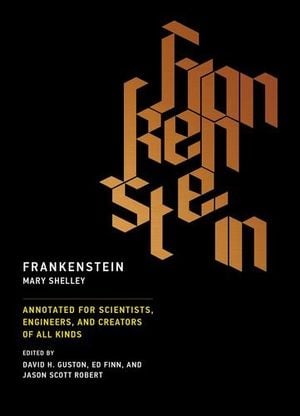
Frankenstein: Annotated for Scientists, Engineers, and Creators of All Kinds (Mit Press)
This edition of Frankenstein pairs the original 1818 version of the manuscript with annotations and essays by leading scholars exploring the social and ethical aspects of scientific creativity raised by this remarkable story.
The editors also commissioned essays looking at everything from gender and nature in the book to the idea of “ technical sweetness ”—that is, the idea of a technical problem having an inevitable, perfect solution.
The resulting paperback is its own kind of stitched-together creature: behind a dramatic graphic cover, the reader finds many of the trappings of a traditional book, including a footnoted editors’ preface and introduction, the annotated novel, the essays, and a historical timeline of Shelley’s life. It’s still Frankenstein , one of the most commonly assigned books in university classrooms according to Manaktala, but it’s Frankenstein anatomized, laid bare on a dissection table with a number of its scientific, philosophic and historical entrails pulled out for readers to examine.
Frankenstein presents an excellent vehicle for introducing readers to a broader conversation about scientific responsibility, says Finn. In contrast to the pejorative use of Frankenstein’s name in terms like “Frankenfood” for GMOs, the novel is “actually quite thoughtful and takes a much more nuanced and open stance on this question of scientific freedom and responsibility,” he says.
“It’s a book that’s relentlessly questioning about where the limits are and how far to push, and what the implications are of what we do in the world,” Manaktala says. For students learning about subjects like gene editing and artificial intelligence, those questions are worth exploring, she says, and science fiction offers a creative way to do that.
As part of an effort to keep the book accessible to a wide scholastic audience, the editors created the Frankenbook , a digitally annotated website version of the book where they plan to expand the annotations of the print version. Hosted by MIT Press, the site also has a community annotation function so students and teachers can add their own comments.
Manaktala says the publisher is looking for other seminal works of fiction to annotate in a similar fashion, though nothing has been settled on yet. “It’s a way to keep great works of literature relevant for a wide readership,” she says. As for the annotated Frankenstein and the online Frankenbook, they remain, like the story they tell, a cultural work in progress.
Get the latest Travel & Culture stories in your inbox.
A Note to our Readers Smithsonian magazine participates in affiliate link advertising programs. If you purchase an item through these links, we receive a commission.
Kat Eschner | | READ MORE
Kat Eschner is a freelance science and culture journalist based in Toronto.
Notice: All forms on this website are temporarily down for maintenance. You will not be able to complete a form to request information or a resource. We apologize for any inconvenience and will reactivate the forms as soon as possible.
Book Review
Frankenstein.
- Mary Shelley
- Historical , Horror , Science Fiction
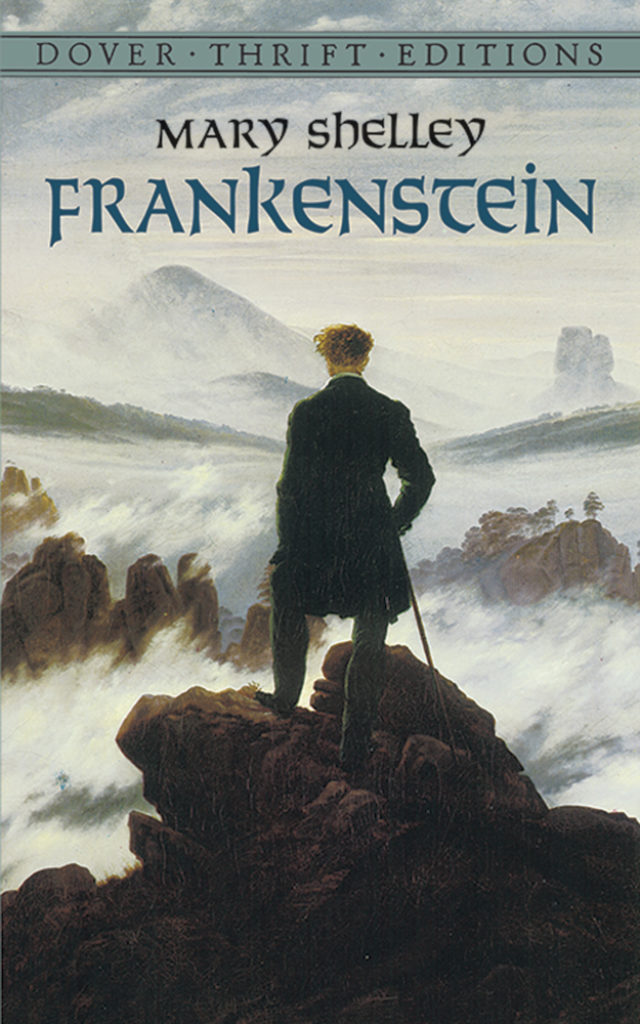
Readability Age Range
- Dover Thrift Edition, Dover Publications; first published in 1818, this edition published in 1994
Year Published
Frankenstein by Mary Shelley has been reviewed by Focus on the Family’s marriage and parenting magazine .
Plot Summary
In the 18th century, a sea captain named Walton writes to his sister from his North Pole expedition. He tells her he’s rescued a scientist named Victor Frankenstein, and he shares the man’s strange and horrific tale:
Frankenstein lived with his close-knit family in Europe. His parents adopted an orphaned girl named Elizabeth, and they hoped she and Victor would marry someday. Victor and Elizabeth both looked forward to this marriage.
As a young man, Victor leaves home and studies science. He begins to experiment, hoping to reanimate dead bodies. He pieces together a creature and manages to bring it to life. When it begins to move, he is appalled by its hideous form and distraught by what he’s created. Frankenstein flees his laboratory. He later returns to find the creature is gone. The incident causes Victor to fall into a lengthy illness. His friend Henry nurses him back to health.
Months later, Victor returns to his family’s home in Geneva. He sees his creature climbing a mountain nearby. Then he learns his brother, William, has recently been murdered. Justine, William’s caretaker and a family friend, is accused of the crime. Victor knows his creature is to blame, but he is unable to prove Justine’s innocence or prevent her hanging. The grieving Victor runs away to the mountains. His creature finds him there and gives Victor his account of entering the living world:
The creature explains that after leaving Frankenstein’s house he quickly discovered that humans are terrified of him. He hid out in the woods but began to watch a family in a nearby cottage. He learned how to speak and act over the months he spent observing them. Finally, he decided he wanted to befriend them. He believed he might succeed if he could first introduce himself to the blind father alone.
The father was amiable as the creature spoke of his desire for friendship. But when the rest of the family returned to see the creature in their home, they screamed in terror. The creature fled. He later burned down the house in frustration when he realized humans would never accept him. He began to hunt for information about his creator. His first act of revenge against Frankenstein was to kill William.
The creature demands that Victor create a woman like him so he won’t be alone in the world. He promises to vanish forever if Victor does this. Victor reluctantly agrees and goes to do his work on a remote island in Scotland. He knows the creature is watching him. He has great difficulty making himself start the project, especially as he imagines what might happen if the creatures produce offspring. He finally destroys the female, and the enraged monster vows he will be with Victor on his wedding night.
Victor leaves for Ireland and is accused of murder upon arrival. He learns the deceased is his dear friend Henry. Victor is eventually acquitted, but the incident devastates him. He returns to Geneva to marry Elizabeth, all the while fearing the creature’s threat. Frankenstein spends the wedding night anxiously watching for the monster, only to have the creature kill Elizabeth in the next room. Devastated by Elizabeth’s death, Victor’s father dies a few days later. Victor has lost everyone he loved, and he vows to have revenge. He pursues the monster as far as the North Pole, but then he collapses. That’s when Walton finds him.
Narration about Captain Walton resumes. With the ailing Victor aboard and the ice becoming too difficult to navigate, the captain decides to turn the ship around. Victor dies, and the creature comes aboard to mourn him. Walton discovers the creature, and the monster laments that his creator’s death hasn’t brought him the peace he’d expected. He vows to kill himself and floats away on a raft of ice.
Christian Beliefs
The monster refers to himself as Frankenstein’s “Adam,” since the scientist was his creator. He laments the fact that Frankenstein considers him more like Satan than a son.
Other Belief Systems
Frankenstein calls his mother’s death a bad omen.
Authority Roles
Frankenstein creates a monster but cannot tolerate it when it comes to life. He agonizes about how to satiate the creature’s need for love without creating a race of monsters that would haunt future generations. Victor’s parents take in the orphaned Elizabeth and love her as their own.
Profanity & Violence
The Lord’s name is used in vain a few times.
Though not described in graphic detail, Frankenstein tears apart his female creation. Justine was hanged, and a cottage was burned down.
Sexual Content
Discussion topics.
Get free discussion questions for this book and others, at FocusOnTheFamily.com/discuss-books .
Additional Comments
Historical context: Mary Shelley wrote Frankenstein in 1818 and revised it in 1831. The 1831 text is the version most commonly found in modern reprints of the book, including this one reviewed by Focus on the Family.
You can request a review of a title you can’t find at [email protected] .
Book reviews cover the content, themes and worldviews of fiction books, not their literary merit, and equip parents to decide whether a book is appropriate for their children. The inclusion of a book’s review does not constitute an endorsement by Focus on the Family.
Latest Book Reviews
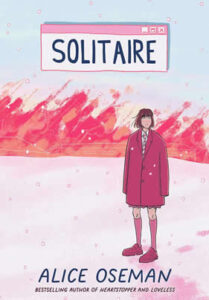
The Minor Miracle: The Amazing Adventures of Noah Minor
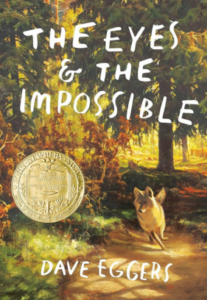
The Eyes and the Impossible
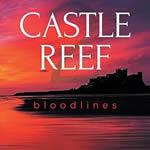
Castle Reef 2: Bloodlines
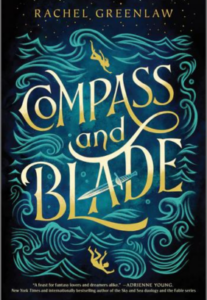
Compass and Blade
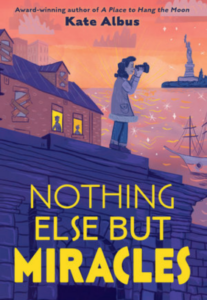
Nothing Else But Miracles
Weekly reviews straight to your inbox.

- Craft and Criticism
- Fiction and Poetry
- News and Culture
- Lit Hub Radio
- Reading Lists

- Literary Criticism
- Craft and Advice
- In Conversation
- On Translation
- Short Story
- From the Novel
- Bookstores and Libraries
- Film and TV
- Art and Photography
- Freeman’s
- The Virtual Book Channel
- Behind the Mic
- Beyond the Page
- The Cosmic Library
- The Critic and Her Publics
- Emergence Magazine
- Fiction/Non/Fiction
- First Draft: A Dialogue on Writing
- Future Fables
- The History of Literature
- I’m a Writer But
- Just the Right Book
- Lit Century
- The Literary Life with Mitchell Kaplan
- New Books Network
- Tor Presents: Voyage Into Genre
- Windham-Campbell Prizes Podcast
- Write-minded
- The Best of the Decade
- Best Reviewed Books
- BookMarks Daily Giveaway
- The Daily Thrill
- CrimeReads Daily Giveaway
News, Notes, Talk
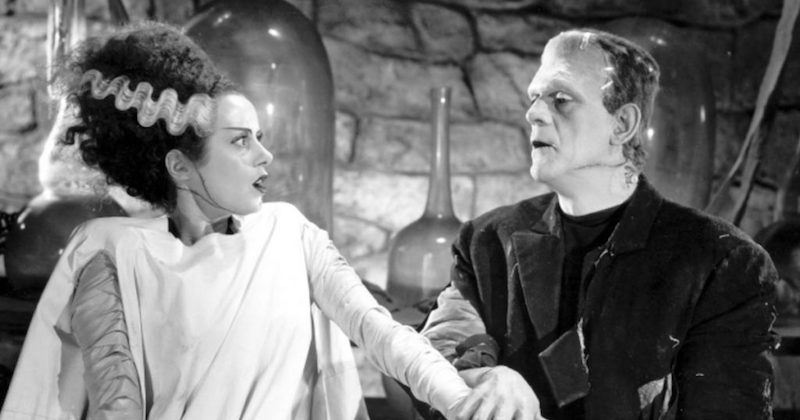
Read Percy Shelley’s review of Mary Shelley’s Frankenstein .

As the story goes, eighteen-year-old Mary Shelley came up with the idea for Frankenstein one dreary summer night in 1816 while she and the poet Percy Shelley (her then lover, later husband), were vacationing in the Swiss Alps with Lord Byron, who suggested that they pass the time by each writing their own ghost story. “Perhaps a corpse would be re-animated,” mused Mary, and the rest is literary history.
When she unleashed Frankenstein upon the world two years later, she did so anonymously. Nevertheless, word got out that the book’s author was a woman ( gasp ), and the ensuing early reviews were incredibly critical. One particularly misogynistic critic wrote, “The writer of it is, we understand, a female; this is an aggravation of that which is the prevailing fault of the novel; but if our authoress can forget the gentleness of her sex, it is no reason why we should; and we shall therefore dismiss the novel without further comment.”
The year before it was released, in anticipation of the myopic critical backlash, Percy Shelley wrote a rave review (sadly unpublished until 1832, ten years after had Percy drowned in the Gulf of La Spezia) of his new wife’s remarkable debut.
Take note, literary couples: this is what supporting your spouse in their creative endeavors looks like.

Beware; for I am fearless, and therefore powerful.
“The novel of Frankenstein, or the Modern Prometheus, is undoubtedly, as a mere story, one of the most original and complete productions of the age. We debate with ourselves in wonder as we read it, what could have been the series of thoughts, what could have been the peculiar experiences that awakened them, which conducted in the author’s mind, to the astonishing combination of motives and incidents and the startling catastrophe which compose this tale … it is conducted throughout with a firm and steady hand. The interest gradually accumulates, and advances towards the conclusion with the accelerated rapidity of a rock rolled down a mountain … We are held breathless with suspense and sympathy, and the heaping up of incident on incident, and the working of passion out of passion … The pathos is irresistible and deep … In this the direct moral of the book consists; and it is perhaps the most important, and of the most universal application, of any moral that can be enforced by example. Treat a person ill, and he will become wicked … It is impossible to read this dialogue—and indeed many other situations of a somewhat similar character—without feeling the heart suspend its pulsations with wonder, and the tears stream down the cheeks! … The general character of the tale indeed resembles nothing that ever preceded it … an exhibition of intellectual and imaginative power, which we think the reader will acknowledge has seldom been surpassed.”
–Percy Shelley, Athenaeum , November 10, 1832
- Click to share on Facebook (Opens in new window)
- Click to share on Twitter (Opens in new window)
- Click to share on LinkedIn (Opens in new window)
- Click to share on Reddit (Opens in new window)
- Click to share on Tumblr (Opens in new window)
- Click to share on Pinterest (Opens in new window)
- Click to share on Pocket (Opens in new window)
- Click to email a link to a friend (Opens in new window)
- Click to print (Opens in new window)
to the Lithub Daily
April 23, 2024.

- Samanth Subramanian on AI and the end of the human writer
- On the rise of literary travel
- Emily Barr writes about libraries, Encyclopedia Brown , and her brother, Philip Seymour Hoffman

Lit hub Radio

- RSS - Posts
Literary Hub
Created by Grove Atlantic and Electric Literature
Sign Up For Our Newsletters
How to Pitch Lit Hub
Advertisers: Contact Us
Privacy Policy
Support Lit Hub - Become A Member
Become a Lit Hub Supporting Member : Because Books Matter
For the past decade, Literary Hub has brought you the best of the book world for free—no paywall. But our future relies on you. In return for a donation, you’ll get an ad-free reading experience , exclusive editors’ picks, book giveaways, and our coveted Joan Didion Lit Hub tote bag . Most importantly, you’ll keep independent book coverage alive and thriving on the internet.

Become a member for as low as $5/month

IMAGES
VIDEO